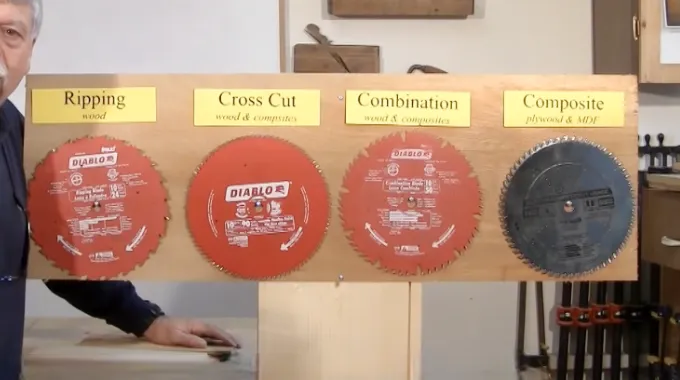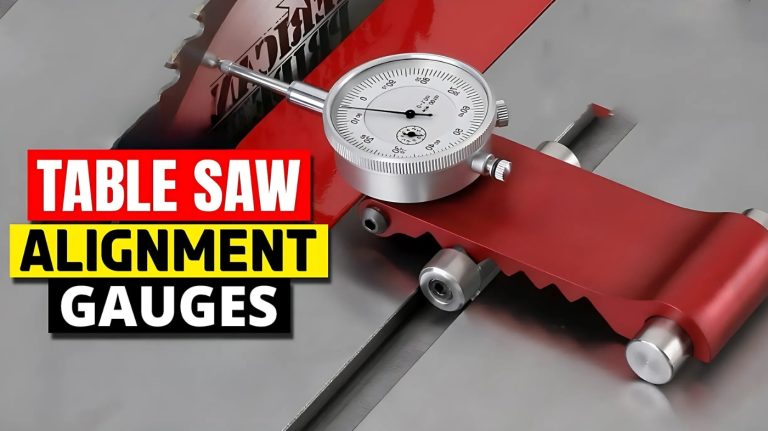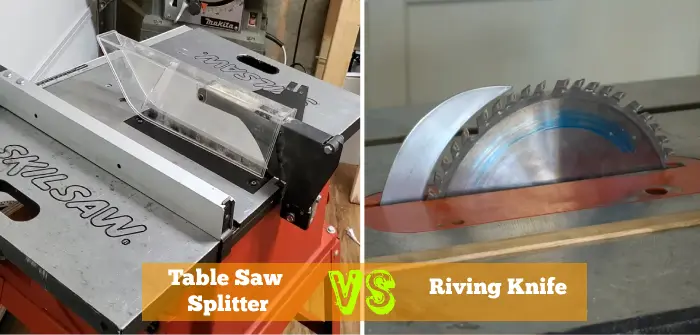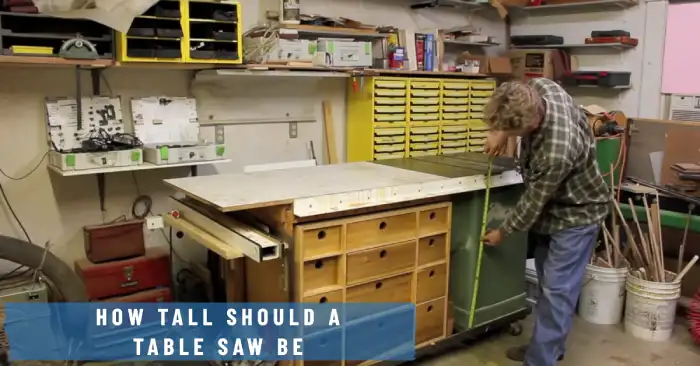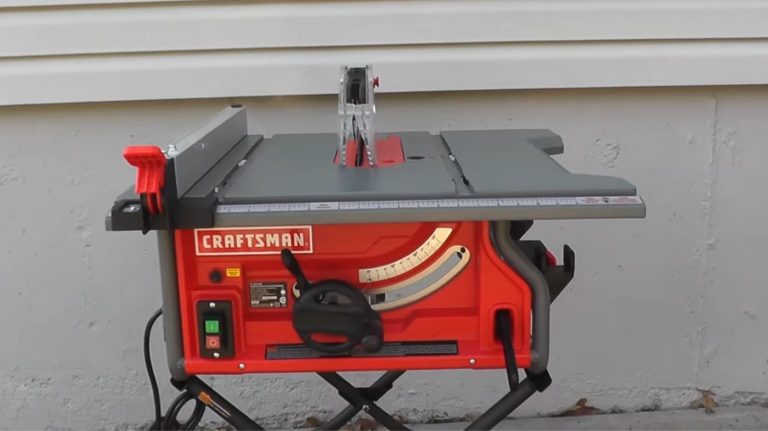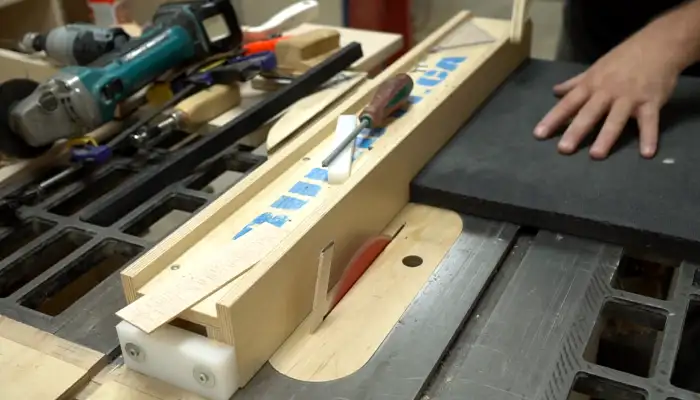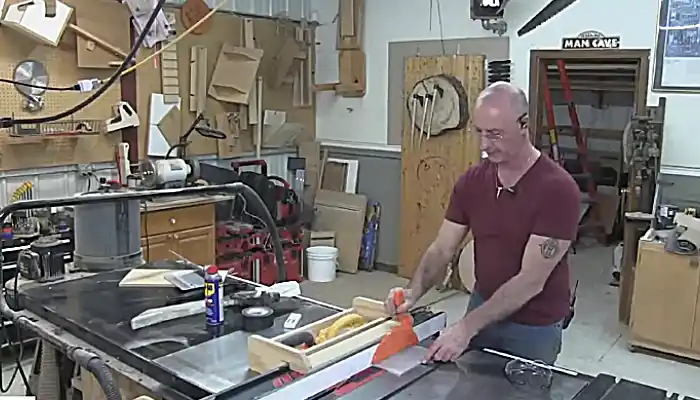Can You Use a Smaller Blade on a Table Saw: 7 Steps
The choice of saw blades is pivotal in ensuring precision, efficiency, and safety in woodworking endeavors. I’ve wondered if using a smaller blade on a woodworking table saw is possible. It turns out it is.
In fact, according to my research, woodworkers have successfully used smaller blades on their table saws. Smaller blades offer advantages such as increased precision and reduced kickback.
Here, I will explain step-by-step how to use a smaller blade on a table saw. After reading this guide, you’ll be ready to unleash your creativity and maximize efficiency with a smaller blade.
How Can You Use a Smaller Blade on a Woodworking Table Saw?
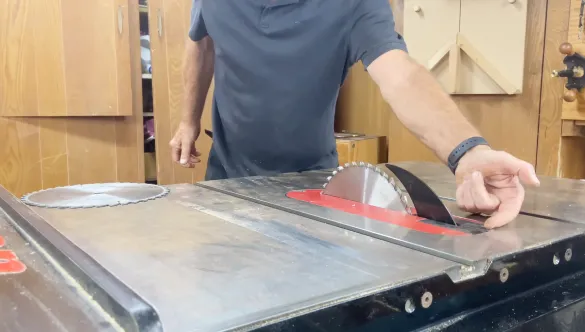
There are several important steps to follow to use a smaller blade on a woodworking table saw. Here, I listed the steps in order of importance:
- Check arbor size
- Throat plate adjustment
- Riving knife and splitter alignment
- Safety measures
- Run a test cut
- Monitor cutting behavior
- Adapt cutting techniques
Step 01: Check Arbor Size
Before considering using a smaller blade on a woodworking table saw, I recommend checking the arbor size matches the blade specifications.
The arbor size refers to the diameter of the hole in the blade’s center that fits onto the table saw’s arbor. Typically, table saw arbor sizes are universal, allowing for interchangeability with circular saw blades. However, it’s crucial to verify that the arbor size of your table saw matches the specified arbor size for the smaller blade.
This ensures a secure fit and prevents any wobbling or instability during operation. Failing to match the arbor sizes may result in unsafe working conditions and potential damage to the equipment.
Therefore, make sure the arbor size of your old circular blade matches the size of the smaller blade before using it on your table saw.
Step 02: Throat Plate Adjustment
To begin, you need to remove the existing throat plate and examine its dimensions. Using a measuring tape, determine the opening size needed for the smaller blade.
Then, mark the new position on the throat plate and carefully cut out the opening using a jigsaw or a coping saw. It’s important to ensure the new opening is precise and fits the smaller blade snugly. Reinstall the throat plate once the opening is cut, ensuring it’s securely fastened to the table saw.
Step 03: Riving Knife and Splitter Alignment
I know that when using a smaller blade on table saws, it’s crucial to align the riving knife and splitter with the blade.
The riving knife is a safety feature that prevents kickback by keeping the wood separated after it passes through the blade. On the other hand, the splitter helps prevent the wood from pinching and binding against the blade.
When aligning the splitter and riving knife with the smaller blade, you need to adjust the thickness of the riving knife so that it matches the kerf of the smaller blade. This can be done by loosening the screws that hold the riving knife in place and moving it closer or further away from the blade.
Once properly aligned, the riving knife and splitter will work with the smaller blade to ensure a safe and efficient cutting experience.
Step 04: Safety Measures
Before you change your table circular saw blade, double-check all safety features, including the blade guard, anti-kickback pawls, and any other safety components specified in the user manual. These safety features are designed to protect you from potential accidents and shouldn’t be overlooked, even when using a smaller blade.
Ensure all safety features are properly functioning before operating the table saw. Additionally, always wear appropriate personal protective equipment, such as safety goggles, ear protection, and a dust mask, to protect yourself from flying debris and potential health hazards.
Step 05: Run a Test Cut
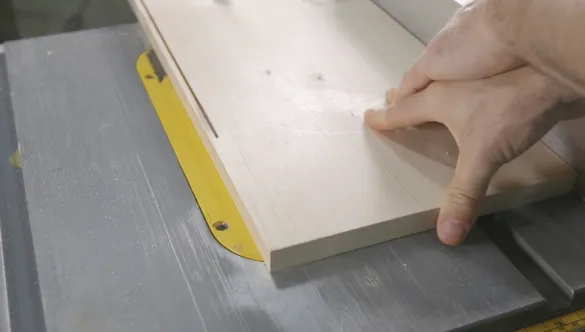
Now, a test cut on a scrap piece of material is essential to assess the performance of the table saw. This step allows us to evaluate how the smaller blade handles the cutting process and determine if any adjustments are needed before proceeding with the actual project.
Begin by selecting a scrap piece of the same material used for the project. Place the scrap piece on the table saw and ensure it’s securely positioned.
Next, turn on the saw and slowly guide the material through the blade, maintaining a steady and even feed rate.
Observe the cut to assess the quality, smoothness, and accuracy. Take note of any issues or concerns during the test cut.
This will help us make necessary adjustments and ensure optimal performance using a smaller blade on a woodworking table saw.
Step 06: Monitor Cutting Behavior
Monitoring the cutting behavior is crucial when using a smaller blade on a woodworking table saw. It allows you to identify changes in the saw’s performance and make necessary adjustments.
One important aspect to observe is the cut depth. A smaller blade may have a reduced cut depth compared to a larger blade. If you notice a significant decrease in cut depth, you may need to adjust the blade’s height or the fence’s position to optimize the cut.
Another aspect to monitor is the feed speed. A smaller blade may require a slower feed speed to ensure smooth and accurate cuts.
Lastly, pay attention to any unusual noise or vibrations during operation, as these could indicate an issue that needs to be addressed.
Step 07: Adapt Cutting Techniques
I also advise maintaining a steady feed rate when using a smaller blade to ensure clean and accurate cuts. You should avoid rushing the process and take your time to allow the smaller blade to work efficiently.
Additionally, you can experiment with different cutting speeds to find the optimal balance for the specific characteristics of the smaller blade. This may involve adjusting the speed of the table saw or your hand movements during the cutting process.
When Can You Use a Smaller Blade on a Table Saw?
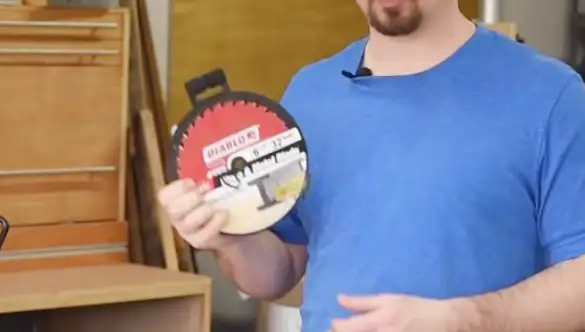
According to my findings, several factors must be considered when using a smaller blade on a table saw.
1. Material Thickness and Type
One must consider the thickness and type of material being cut to determine if a smaller blade can be used on a woodworking table saw.
Smaller blades are generally suitable for materials with a thickness of 3/8′. A larger blade is recommended to ensure a clean and efficient cut when working with thicker materials.
Additionally, the type of material being cut should be taken into account. Different materials have varying densities and hardness, affecting the blade’s performance.
For example, softer woods may be more forgiving and allow for a smaller blade, while harder wood or metal materials may require a larger blade for optimal cutting.
So, I recommend choosing the appropriate blade size based on the material thickness and type to achieve the best results and maintain safety during cutting operations.
2. Throat Plate and Saw Adjustments
Creating a custom throat plate is often necessary to accommodate a smaller blade on a woodworking table saw. The throat plate, also known as the insert, is the removable plate that surrounds the blade and supports the workpiece.
When using a smaller blade, the existing throat plate may have a larger opening than necessary, leading to instability and an increased risk of kickback. By creating a custom throat plate that matches the size of the smaller blade, you can ensure a more secure and accurate cut.
Additionally, adjustments to the riving knife and splitter may be required to align with the reduced kerf of the smaller blade. These adjustments help maintain the integrity of the cut and prevent potential issues associated with altered rim speed and torque.
3. Safety Measures and User Manuals
Safety measures are of utmost importance when considering a smaller blade on a table saw. The user manual provides essential information on operating the table saw safely and effectively. It outlines the specific safety guidelines and precautions users must follow to avoid accidents and injuries.
Additionally, the manual provides detailed instructions on adjusting the throat plate to accommodate a smaller blade, ensuring proper alignment and reducing the risk of kickback. It also specifies any limitations or recommendations regarding blade size, ensuring the user makes informed decisions.
4. Blade Width and Compatibility
It’s important to ensure that the width of the smaller blade aligns with the dimensions of the throat plate, riving knife, and splitter on the table saw. This ensures safety and functionality during operation.
To prevent potential binding issues and promote a smooth cutting experience, it’s advised to match the width of the smaller blade with the splitter knife. This alignment ensures the blade fits properly and prevents unnecessary friction or obstruction during cutting.
It’s essential to refer to the user manual of the table saw to understand the specific blade width requirements and compatible components.
5. Arbor Size and Circular Saw Blades
With the universal nature of arbor sizes for table saws, it’s possible to use a smaller circular saw blade on a woodworking table saw without requiring additional adapters. This interchangeability allows for increased versatility and the opportunity to explore different blade options.
When considering the use of a smaller circular saw blade on a table saw, it’s important to ensure that the arbor size matches the blade’s size.
The arbor size is the diameter of the hole in the center of the blade that connects to the table saw’s arbor. Using a blade that matches the arbor size is crucial to ensure proper fit and safe operation.
What advantages do smaller blades offer compared to larger ones?
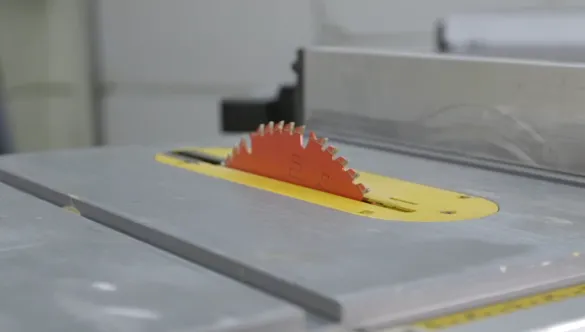
As far as I know, smaller blades offer four key advantages compared to larger ones.
- Firstly, cost-effectiveness is a major benefit. Smaller blades tend to be less expensive, allowing users to save money without compromising on quality.
- Secondly, smaller blades result in reduced wasted wood. With less material being cut away, there’s less waste, making smaller blades more efficient.
- Thirdly, smaller blades provide increased torque. The smaller size allows for more power to be concentrated, resulting in smoother and more precise cuts.
- Lastly, smaller blades offer a quieter cutting experience. The reduced size reduces noise levels, making users more comfortable and reducing disturbance in the surrounding environment.
What size blade do most table saws use?
Most table saws use either an 8 1/4-inch or a 10-inch blade. These sizes are standard in the industry and balance cutting capacity and maneuverability well.
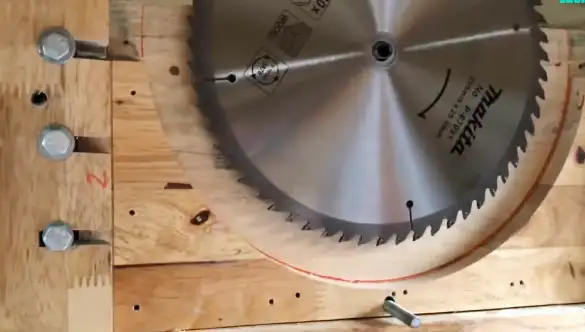
The 8-1/4 inch blade is commonly used in smaller table saws and is suitable for cutting through thinner materials. It’s ideal for projects that require precision and finesse.
Conversely, the 10-inch or 12-inch saw blade is more versatile and can handle a wider range of materials and cutting depths. It’s commonly used in larger table saws and provides greater cutting capacity.
Whether you choose the 8 1/4-inch or 10-inch blade will depend on the specific needs of your woodworking projects.
The True Potential of Smaller Blades for Table Saws
In the ever-evolving landscape of woodworking, incorporating smaller blades into the repertoire of table saw accessories adds versatility and efficiency.
The journey through user experiences, safety considerations, and the nuanced benefits of smaller blades showcase the dynamic nature of craftsmanship. Using smaller blades on 10″ table saws offers valuable insights and practical considerations as woodworkers push conventional wisdom.
Woodworkers’ ingenuity can be seen in cost-effectiveness, safety adjustments and enhanced performance when exploring blades.
So, in my opinion, the specific needs of your woodworking projects determine whether you should use a smaller blade on your 10″ table saw.

